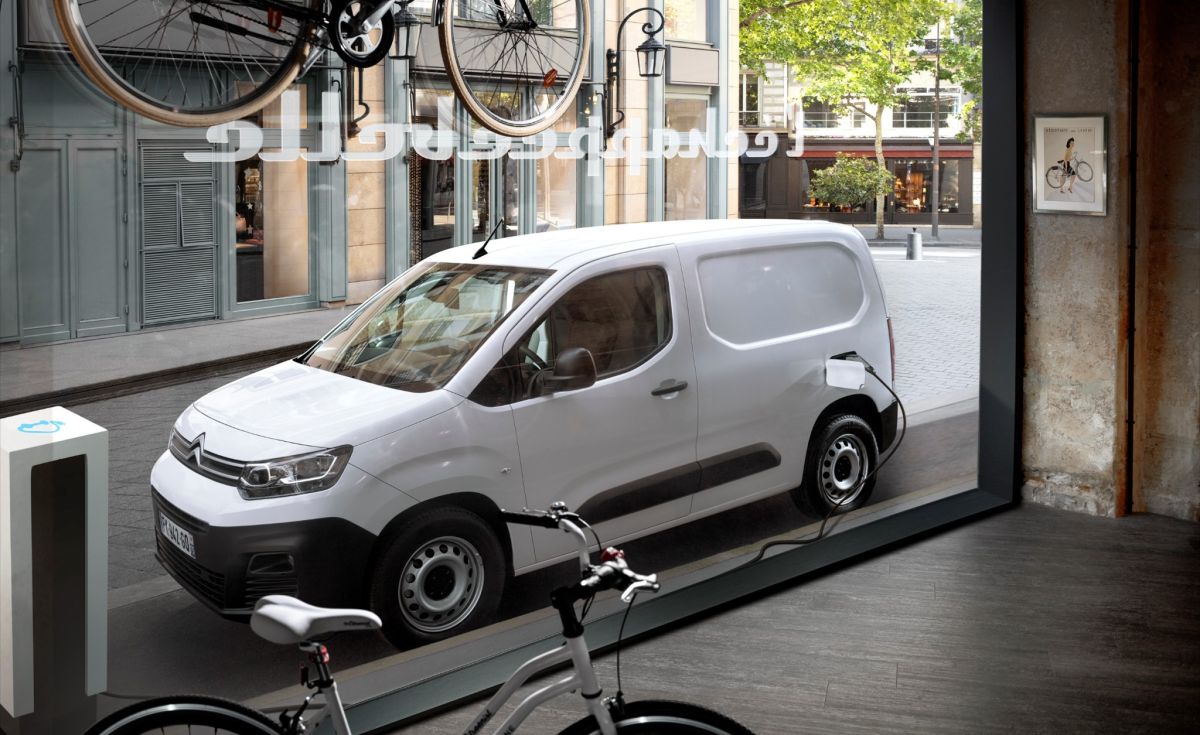According to the procedures entered into in the transport and logistics sector, cargo transportation on international routes has always been a task of heavy transport, while light commercial vehicles are mostly used for trips within the country.
Both groups of vehicles are currently dominated by diesel engines, but it is expected that we will see more and more electric cars on intercity routes in the coming years.
Electrified buses have been in use for quite some time, but mainly in and around cities. Engineers also focused on just such an application, so specific customized models such as the Volkswagen e-Crafter and the Mercedes-Benz eSprinter appeared on the market. Since the machines were designed for a specific purpose, no one was particularly impressed by the relatively small 36 kWh battery, nor by the modest range of 170 km on a full charge – it was enough for daily routes in the city. However, as batteries, electric motors and charging equipment improved, so did the capabilities of the next generation of machines. There are models on the market such as Citroën ë-Jumpy, Peugeot e-Expert and Ford e-Transit, for which, depending on the configuration, even 300 kilometers is no longer an obstacle.
When planning the transition to less polluting transport, the relatively small territory of the Baltic States can prove to be a significant advantage. For example, in Latvia, the distance between Riga and any large regional center does not exceed 230 kilometers. In Lithuania, the most popular route Vilnius-Klaipeda is around 300 kilometers long, while in Estonia Tallinn and Tartu are separated by less than 200 kilometers. Even the distance between the capitals of the countries does not exceed 300 kilometers. These distances may seem large to the people of the Baltics, but compared to the scales of Ukraine, France and Sweden, they are comically small. Moreover, such a distance can now be covered even with a loaded electric van.
The biggest hurdle has been cleared
Jānis Trēziņš, head of the full-service car rental and fleet management company Mobire Latvija, believes that the new generation of electric commercial vehicles has approached the moment when one could think about their regular use in intercity trips. True, it would take some planning to turn out successfully.
“For the time being, the question of the maximum range with a full load of the car remains open – no one has properly checked it. Entrepreneurs are also concerned about the fact that the distance traveled decreases in cold weather. However, the technical parameters announced by the manufacturers look interesting,” analyzes the market expert.
It seems that the manufacturers have solved the issue of carrying capacity. With the Citroën ë-Jumpy and Peugeot e-Expert, it is possible to transport up to 1 ton of cargo, while the more powerful version of the Ford e-Transit can carry up to 1.6 tons. All these models can travel more than 300 kilometers on a full charge.
In cold weather, this distance will decrease, but even in winter, when transporting heavy loads, electric vans will travel at least 200 kilometers on a single charge. This distance is sufficient for most transport and logistics companies. During loading and unloading or during the driver’s break, the machine is stationary, and this time can be put to good use. “Loading and unloading the cargo at the destination takes more than an hour, and while the driver rests or has lunch, the battery can be recharged. It only needs a minimum of charging infrastructure. In addition, it is not necessary to fill the battery up to 100 percent – you only need enough to last the return trip. Sometimes it only takes 15 minutes, or as long as a coffee break,” explains Jānis Trēziņš.
Fast DC charging is a backup option
Modern commercial vehicles can be charged with quite a lot of power. Its Citroën ë-Jumpy battery takes up to 100 kW. However, due to the high costs, entrepreneurs will only stop at fast stations in unexpected cases. On a typical workday, they should be using their machines. “Weighing the options, public express stations are not the best option. The works should be planned so that private 11 or 22 kW stations can be used. Fast charging rather remains as a backup option,” thinks the head of Mobire Latvija.
Today’s companies are hard to imagine without a sustainability strategy. Jānis Trēziņš predicts that they will give a certain boost to the greater demand for electric cars. However, previously unforeseen obstacles can also stand in the way of faster progress. “Now the most pressing problem is not even the price, but the long delivery time. Such cars are not stored in warehouses – they must be ordered. Commercial vehicles powered by electricity are bought more often in Latvia, but it takes time before they reach customers,” Jānis.
Will buy less, but will choose an electric car
According to Jānis Trēziņš, electric light commercial vehicles are still best suited for courier services and goods suppliers. The purchase of electric cars will also be facilitated by the procurement of state and local government institutions that intend to choose vehicles with very low emissions. “Probably, public institutions and companies will buy fewer cars, but they will be electric. Unlike the passenger car sector, there are no plug-in hybrids in commercial vehicles, so electric drive remains the only solution in this case,” the expert says.
Jānis Trēziņš adds that when the Riga municipality limits the driving of internal combustion cars in the city center, not only large minibuses will be needed, but also small commercial vehicles. Models such as the Citroën ë-Berlingo Van and Mercedes-Benz eCitan would be suitable for delivery services, real estate managers and various service providers.
The smaller models use similar technology to the larger electric vans. It provides a solid payload and considerable mileage on a single charge. For example, the ë-Berlingo Van can carry up to 800 kg of cargo and travel up to 275 km with a fully charged battery.

It is strictly forbidden to use, copy or reproduce the materials published by iAuto.lv on other Internet portals, mass media or otherwise deal with the materials published by iAuto.lv without receiving written permission from EON SIA.

